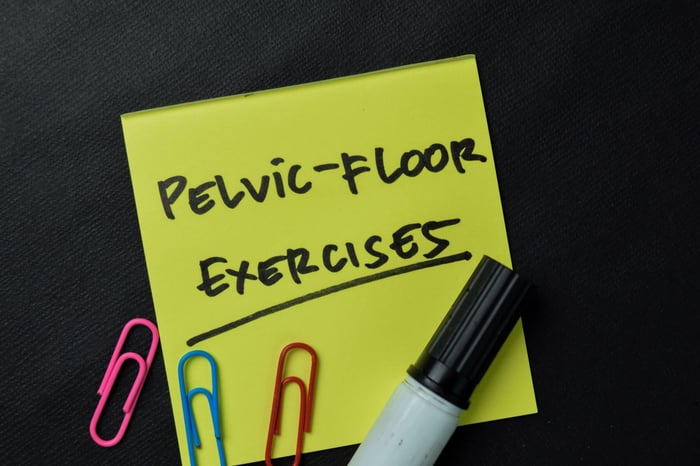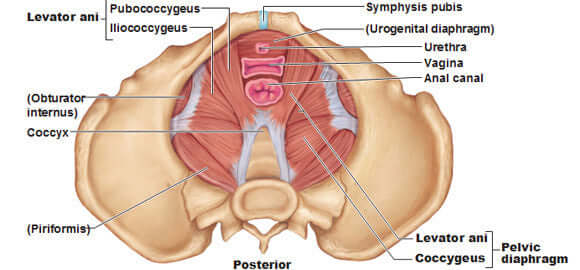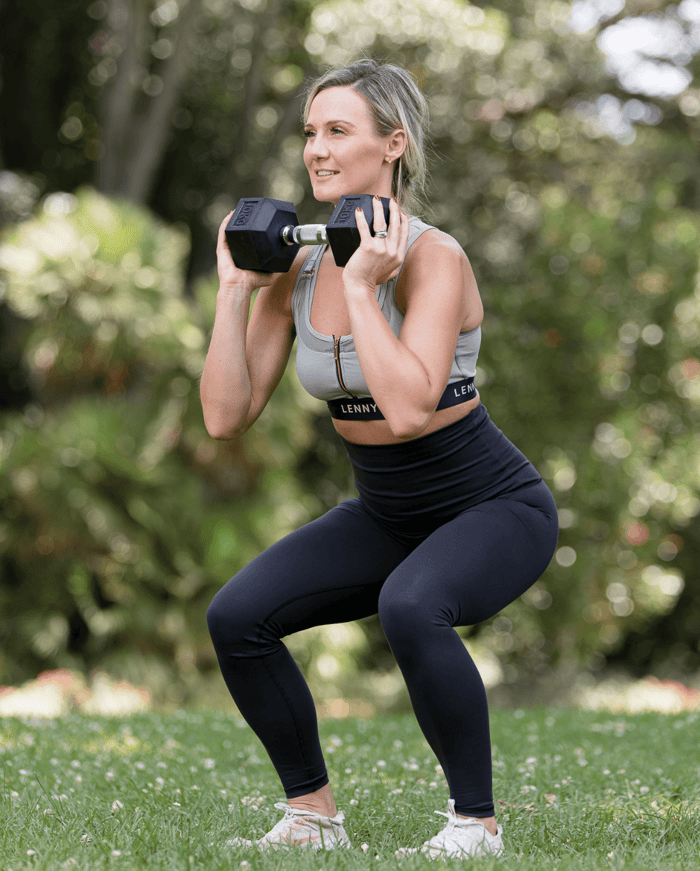With Women's Physiotherapist Rosie Dumbrell and Featuring Everform Therapywear Products.

The pelvic floor muscles play a crucial role in supporting the bladder, uterus, and bowel. Weakening of these muscles can lead to various issues, including incontinence and pelvic organ prolapse. Fortunately, targeted exercises can help strengthen and repair the pelvic floor. In this post, we'll explore some of the most effective exercises, along with how Everform Therapywear can support your recovery journey.
Understanding Pelvic Floor Dysfunction |
Pelvic floor dysfunction can arise from several factors, including pregnancy, childbirth, aging, obesity, chronic respiratory problems, and high-impact activities. Symptoms may include urinary (think leaking when you cough, sneeze, laugh, jump or run) or fecal incontinence, pelvic pain, discomfort during intercourse or difficulty achieving orgasm. While these issues can be distressing, targeted exercises and supportive measures can significantly improve pelvic floor strength and function.
In addition to strengthening the pelvic floor, addressing other contributors to increased pressure on the pelvic floor and organs is crucial. Only about 30% of the support function of the pelvic floor can be attributed to active muscle contraction. The remainder is fascial, or connective tissue - think ligaments supporting the pelvis and pelvic organs, and the supporting fabric or “scaffolding” for the pelvic floor muscles. This is partly why I created Everform Therapywear - knowing that pelvic floor muscle training is crucial but not the only piece of the puzzle.
Looking more holistically - looking at how we breathe - do we use our diaphragm and take deep, belly breaths, or do we breathe up into our upper chest - impacts how the pelvic floor functions. “If we think of the abdomen and pelvis as a flexible container, with the diaphragm at the top, the abdomen (tummy) muscles at the font, lower back muscles at the back, and pelvic diaphragm, or pelvic floor at the bottom, we can perhaps understand that a change at the diaphragm when we breathe also has an effect on the pelvic floor. Just like we need the diaphragm to stretch and relax to be able to take a deep breath, so we need the pelvic floor to be able to move through a full range of motion to function effectively," says women's physiotherapist and Everform founder, Rosie Dumbrell.
Effective Exercises for Pelvic Floor Repair |

Here are some of the most effective exercises to help strengthen and repair your pelvic floor:
1. Kegel Exercises:
Kegels are the cornerstone of pelvic floor strengthening. They involve contracting and relaxing the pelvic floor muscles, and can be timed with breath and activity, once mastered for maximum functional impact.
- How to: Research shows that the best “cue” to hear for correct pelvic floor activation is something along the lines of: “squeeze around your anus, then the vagina, then lift up and in, like an elevator rising.” It may be more relatable to think “stopping the passage of wind, then urine, then lift those muscles up and in.” This targets the deep and superficial layers of the pelvic floor, which are both important for urinary continence. Using your exhale breath on activation can also tap into the natural rhythm of the pelvic floor, that in a well functioning pelvic floor will relax on an inhale, and lift up and in, on an exhale. Once you feel you have mastered the correct action, you might then try to hold the pelvic floor lift for 5-10 seconds, and repeat several times, until you feel fatigued.
- Benefits: Improves bladder control, reduces urinary leakage, and enhances sexual function.
An important note on Kegels: According to Pelvic Health and Continence trained physiotherapist, Rosie Dumbrell: “..Most of us have heard of “Kegels” - and whilst they are the most broadly prescribed exercise for pelvic floor dysfunction, they are not the holy grail. They are one for the tool box - but they are not for everyone - so if you notice your symptoms (particularly pain, or urinary leakage) get worse with regular kegel exercises, then you may need to do some of the opposite - pelvic floor relaxation - instead. Read on to find out more.”
2.Pelvic Floor Relaxation
Just as important as pelvic floor strength, is its mobility - ability to lift, and to lower and completely relax. A pelvic floor that cannot relax can cause many of the same symptoms as a pelvic floor that is weak - so strength, tone and mobility are all key to being leak and pain free.
3.Cat Cow and variants
Posture is incredible important when it comes to how our pelvic floor functions. A kyphotic, or rounded back posture places increased pressure on our abdomen and pelvic floor. Being aware of your posture throughout the day - such a setting a a regular alarm to sit up straight, or alternating between sitting and standing if you are at a desk all day can help reduce pressure on the pelvic floor and pelvic organs. Spine mobility exercises performed daily such as the cat cow and variants, can be a great addition to support your pelvic floor recovery:
- How to: Keep your hands shoulder-width apart and your knees directly below your hips. Inhale deeply while curving your lower back and bringing your head up, tilting your pelvis up like a "cow." Exhale deeply and bring your abdomen in, arching your spine and bringing your head and pelvis down like a "cat." Repeat several times. Adding in a rotation component can also improve mobility and posture. This would include keeping one hand firmly on the ground, and then sweeping the opposite hand up towards the sky as far as is comfortable, then bringing it back down, or going through to reach under your stabilising hand, for a twist in the opposite direction.
- Benefits: Strengthens the core, improves pelvic stability, and alleviates lower back pain.
4.Bridges:
Bridges are a great exercise for strengthening the glutes (butt muscles!), hamstrings, and pelvic floor muscles.
- How to: Lie on your back with your knees bent and feet flat on the floor. On an exhale breath, lift your pelvic floor, engage your glutes and lift your hips off the floor, forming a straight line from your shoulders to your knees. Hold for a few seconds, then slowly lower back down. Work up to 3 sets of 10 reps.
- Benefits: Strengthens the posterior chain, improves pelvic stability, and enhances overall core strength.
5. Bird Dog Exercise:
Bird dog exercises improve core stability and balance while engaging the pelvic floor muscles.
- How to: Start on your hands and knees. Extend one arm forward and the opposite leg backward, keeping your core engaged and back flat, ensuring not to over arch the back by lifting the leg r arm too high - you should be aiming for a horizontal line, in line with your spine from hand to foot. Hold for a few seconds, then return to the starting position. Repeat on the other side.
- Benefits: Enhances core stability, improves balance, and strengthens the pelvic floor muscles.
Everform Therapywear: Enhancing Your Recovery |

Everform Therapywear offers a range of products designed to provide support and comfort during pelvic floor and post-surgical recovery. With patented support ratios designed to lift and support the pelvic floor, bladder and pelvic floor organs, Everform products can complement your exercise routine, helping to enhance recovery and improve your overall well-being.
- Everform Support Shorts: These shorts provide gentle compression and support to the pelvic floor, reducing discomfort and promoting healing. They're ideal for wearing during and after exercise.
- Everform Recovery Leggings: Designed with targeted compression zones, these leggings help improve circulation and reduce swelling, supporting faster recovery.
By incorporating Everform Therapywear into your pelvic floor repair regimen, you can experience enhanced comfort, support, and faster recovery times.
Conclusion |
Recovering from leaks, pelvic pain and heaviness is very often achievable with consistent exercise, body awareness, and the right support. By incorporating these exercises into your routine and utilizing Everform Therapywear products, you can regain strength, mobility and optimal function, to enhance your overall quality of life, and get back to doing the things you love. Remember to consult with a women’s health trained healthcare professional or physiotherapist for personalised guidance and recommendations.




